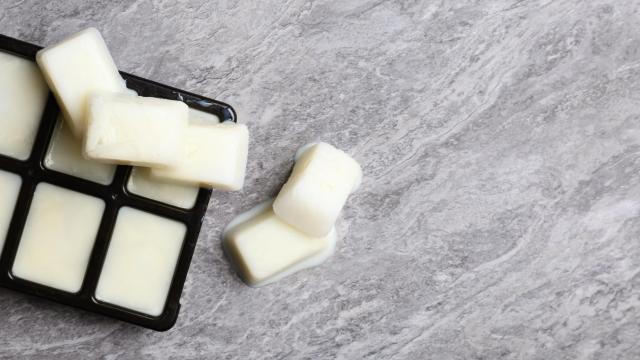I’m one of those sickos who will drink a tall, cold glass of whole milk just for the taste. It’s probably the most perverted aspect of my personality — and the competition is stiff! — and definitely the whitest thing about me. I come from one of those families that serves milk to the children with their dinner, and it turned me into the dairy-guzzling freak I am today. This means my fridge is always stocked with too much milk and cream, all with varying expiration dates that I am terrible at keeping track of. Luckily all three of these things can be frozen.
Unluckily, doing so will affect the mouthfeel. That’s OK though — you just have to adjust your expectations ever so slightly.
What to expect when you freeze and thaw milk
Milk is perfectly safe to freeze, as long as you do so by its “best by” date. My mother used to buy multiple jugs of 2% milk from Costco and chuck ‘em in our standalone freezer. The plastic jugs would swell and bulge, and when thawed, the milk would separate, necessitating shaking before consuming.
The separation can’t be helped, but the bulging can be mitigated. Water expands when it freezes, and that fact must be accounted for. If your milk came in a cardboard carton, transfer it to an air-tight plastic container or freezer bag, leaving a couple of inches of space at the top to allow for expansion. (Leaving it in porous cardboard also means it is more likely to absorb freezer smells and flavours, and nobody wants to drink scrap bag-flavored milk.)
If your milk was packaged in a plastic jug, create some breathing room by pouring out (and enjoying!) a glass before popping that jug in the freezer. You can also freeze milk directly in an ice cube tray, which is especially helpful if you plan to use it for smoothies. (Transfer the cubes to a freezer bag once frozen to prevent them from absorbing pungent freezer aromas.)
Once thawed, your milk will most likely separate into two distinct portions, and it’s possible it will feel a little grainy on your tongue, even after you shake it to re-emulsify. Running it through a blender can get help restore its creamy mouthfeel, but that’s an extra step that you may or may not feel like taking. For that reason, milk that has been frozen is best saved for cooking and smoothies, though it is worth noting that I drank frozen-then-thawed milk throughout my childhood and I don’t remember noticing a huge difference. (But again, I am a freak.) Milk will keep in freezer for up to two months, but should be used within a few days of thawing.
How to freeze cream
The higher the fat content, the better your dairy product will respond to freezing, as there will be fewer pesky ice crystals to mess things up. The procedure for freezing these fattier dairy products is the same as freezing milk: Make sure it’s in a plastic container or freezer bag, leaving an inch of space to accommodate expansion.
Like milk, thawed cream will need to be agitated to mitigate the textural changes and, while thawed heavy cream doesn’t separate all that much, it won’t whip as well as cream that hasn’t been frozen, so you may want to save both for cooking, or perhaps cheese-making. (You can whip cream and then freeze it, however.)
Heavy cream can be frozen for up to two months but, like milk, should be thawed in the fridge and used within a few days of thawing, which shouldn’t be a problem if you’re a dairy-guzzling pervazoid like myself.

Leave a Reply
You must be logged in to post a comment.